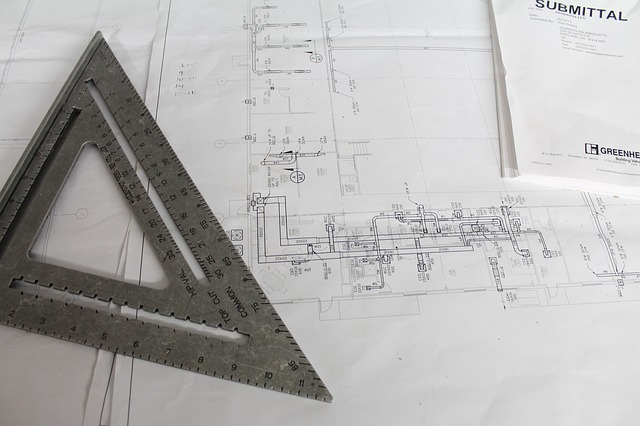Design responsibility matrix
Building design was traditionally carried out by a small team of consultants working for a client, who would complete the design before seeking tenders from contractors to carry out the works. However, as buildings have become more complex, design and construction have begun to overlap, a wide range of specialist designers have emerged, contractors have taken on more of a managerial role, and the whole supply chain has become engaged in the design process. As a result, it is increasingly important to define precisely who is responsible for which part of the design.
A design responsibility matrix (DRM) sets out responsibility for each element of the design at each stage of the design development process and to what level of detail. It might be accompanied by the development of a contractual tree, illustrating the contractual relationship between the participants in the project. It can also be accompanied by a project roles table that sets out the overall roles required for a project.
Preparation of a design responsibility matrix should begin early in the development of the project. It may start with a simple, strategic overview of design responsibility for the main design elements. As the project progresses, however, it should increase in detail to allocate responsibility for specific elements, systems and products, setting out the level of detail and format of design information to be produced and any requirement for collateral warranties.
It is important that design responsibilities are clearly defined and properly understood before tender documentation is prepared or appointments made.
The client may wish to allocate the roles of lead designer and lead consultant to co-ordinate the work of designers. It might also be appropriate to appoint a design co-ordinator (for the co-ordination and integration of design prepared by specialist contractors) and a computer aided design (CAD) and/or building information modelling (BIM) co-ordinator and BIM information manager. Contractors may appoint their own design managers to co-ordinate their own design and that of sub-contractors.
On projects where BIM is adopted, a design responsibility matrix may form part of the Employer's Information Requirements (EIR).
The RIBA Plan of Work 2013 defines the design responsibility matrix as: A matrix that sets out who is responsible for designing each aspect of the project and when. This document sets out the extent of any performance specified design. The Design Responsibility Matrix is created at a strategic level at Stage 1 and fine tuned in response to the Concept Design at the end of Stage 2 in order to ensure that there are no design responsibility ambiguities at Stages 3, 4 and 5.’
The RIBA Plan of Work toolbox provides a pro-forma design responsibility matrix, with each aspect of the design coded according to the Uniclass2 classification system.
[edit] Related articles on Designing Buildings Wiki
- Contractual tree.
- Design liability.
- Design management.
- Design management plan.
- Design manager.
- Design programme.
- Design team.
- Design web.
- Employer's information requirements.
- Lead consultant.
- Lead designer.
- Project roles table.
- Uniclass 2.
- RACI matrix.
[edit] External references
Featured articles and news
The UK's Modern Industrial Strategy: A 10 year plan
Previous consultation criticism, current key elements and general support with some persisting reservations.
Building Safety Regulator reforms
New roles, new staff and a new fast track service pave the way for a single construction regulator.
Architectural Technologist CPDs and Communications
CIAT CPD… and how you can do it!
Cooling centres and cool spaces
Managing extreme heat in cities by directing the public to places for heat stress relief and water sources.
Winter gardens: A brief history and warm variations
Extending the season with glass in different forms and terms.
Restoring Great Yarmouth's Winter Gardens
Transforming one of the least sustainable constructions imaginable.
Construction Skills Mission Board launch sector drive
Newly formed government and industry collaboration set strategy for recruiting an additional 100,000 construction workers a year.
New Architects Code comes into effect in September 2025
ARB Architects Code of Conduct and Practice available with ongoing consultation regarding guidance.
Welsh Skills Body (Medr) launches ambitious plan
The new skills body brings together funding and regulation of tertiary education and research for the devolved nation.
Paul Gandy FCIOB announced as next CIOB President
Former Tilbury Douglas CEO takes helm.
UK Infrastructure: A 10 Year Strategy. In brief with reactions
With the National Infrastructure and Service Transformation Authority (NISTA).
Ebenezer Howard: inventor of the garden city. Book review.
The Grenfell Tower fire, eight years on
A time to pause and reflect as Dubai tower block fire reported just before anniversary.
Airtightness Topic Guide BSRIA TG 27/2025
Explaining the basics of airtightness, what it is, why it's important, when it's required and how it's carried out.
Construction contract awards hit lowest point of 2025
Plummeting for second consecutive month, intensifying concerns for housing and infrastructure goals.
Understanding Mental Health in the Built Environment 2025
Examining the state of mental health in construction, shedding light on levels of stress, anxiety and depression.
The benefits of engaging with insulation manufacturers
When considering ground floor constructions.
Lighting Industry endorses Blueprint for Electrification
The Lighting Industry Association fully supports the ECA Blueprint as a timely, urgent call to action.
























